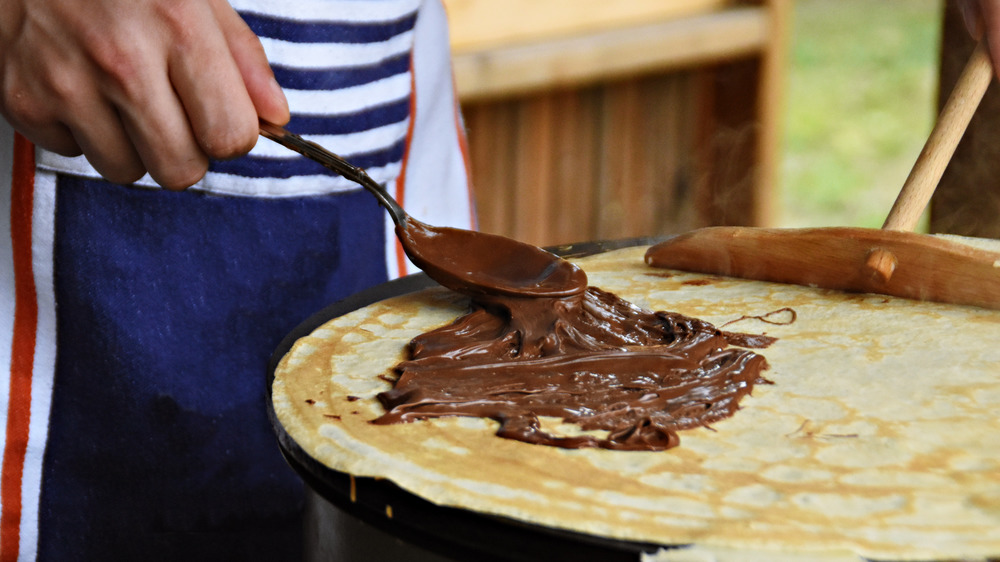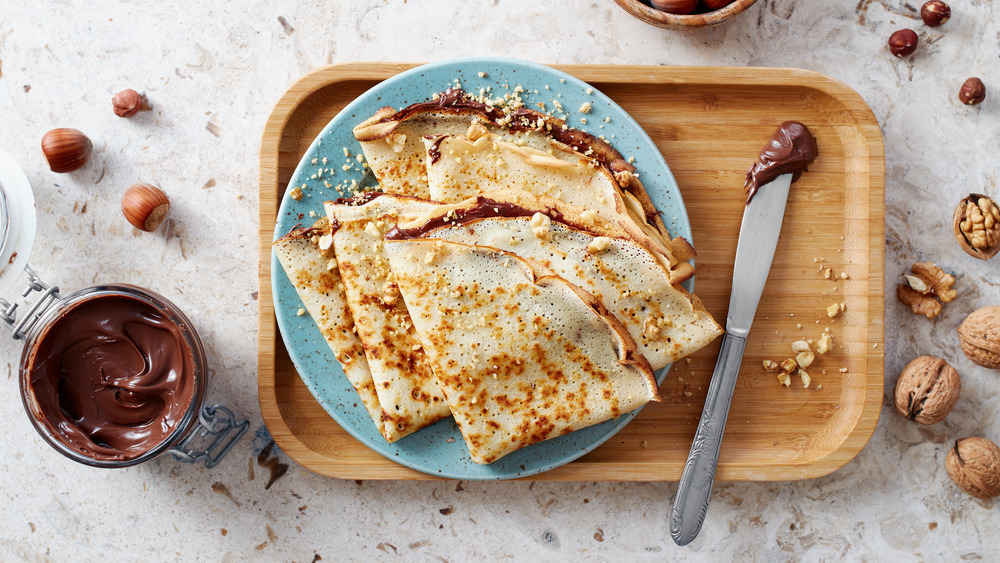Mistakes Everyone Makes When Cooking Crêpes
Who doesn't love a good crêpe? These wafer-thin French beauties are as versatile as they are delicious. They can be enjoyed hot or cold, sweet or savory, healthy or...not-so-much. Plus, Joanna Gaines is a fan, and we love her almost as much as we love crêpes. Usually served as a breakfast dish (though the savory versions make an exciting addition to any lunch or dinner menu), crêpes are the thinner, fancier cousin of the pancake, and as such are slightly higher-maintenance, too. That is to say, while the ingredients may be simple, you'll have to take care to avoid a few common mistakes.
Doing so will elevate any flat pancake to fancy-schmancy crêpe status faster than you can say "voila!" First things first: get the batter right. No matter what recipe you decide to use, Kitchn warns against overmixing, and advises that you rest your batter before you start cooking. The process of mixing your ingredients (usually some combination of eggs, flour, and milk) activates gluten, and letting your batter rest, anywhere from five to 25 minutes, gives that gluten a chance to settle. The result is a softer, airier crêpe than you'd get if you over-mixed and started cooking straight away.
Watch your temperature and leave out the baking soda when it comes to crepes
Next up, make sure your pan temperature is just right. Medium high should do the job, according to Shape, but you can test the heat by putting a drop of water into the pan; if it evaporates, the pan is too hot, but if it lies flat, the pan is not quite hot enough. Look for the drop of water to bounce on the surface of the pan, and you're ready to cook! Shape also suggests keeping a close eye on the amount of batter you use for a crêpe: use too much, and you've accidentally made a pancake. Add just enough batter to coat the bottom of the pan, so that it's nearly transparent.
Chowhound reminds us that the differences between pancakes and crêpes are subtle (e.g. if you've used a raising agent, you've got yourself a pancake, not a crêpe), but important. In fact, those differences might help you determine the best accoutrements (ooh la la) for your crêpe. Either way, as long as you avoid the common blunders, you'll wind up with a blank (disc-shaped) canvas to let your inner crêpe creativity shine!

